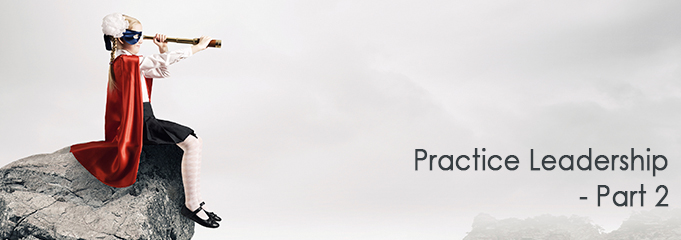
Practice Leadership – Part 2

This article was authored by Janise Mitchell,
Deputy CEO of the Australian Childhood Foundation.
What do practice leaders do?
In this second article in my two part series on practice leadership (part 1 here), I explore a key element of the role of practice leaders in systems such as child protection. In particular, I focus on how reflective practice activities and opportunities by respected leaders in a field are central to the implementation of change and system improvement.
Munro (2011) in her review of the child protection system in the United Kingdom cautioned against sacrificing practice quality for compliance driven systems and supported by others (Ruch, 2007) argued the need to move towards organisations that value and develop professional expertise, and promote the exercise of professional judgment.
To succeed in this she highlighted the need for organisations to improve their capacity to monitor, learn and adapt their practice via regular case review processes that enable deeper learning to overcome obstacles to good practice. Such case reviews, she argued, should move beyond the specifics of the particular case – what happened and why – to identify the ‘deeper’, underlying issues that are influencing practice more generally, suggesting it is these generic patterns that count as ‘findings’ or ‘lessons’ from a case and changing them will contribute to improving practice more widely.
Munro also noted the capacity of procedures to deal well with typical scenarios but not with ‘unusual’ ones, and an organisational culture where procedural compliance is dominant tends to stifle the development of expertise. She suggested that
“dealing with the variety of need is better achieved by professionals understanding the underlying principles of good practice and developing the expertise to apply them, taking account of the specifics of a child’s or young person’s circumstances” (Munro, 2011, p 40).
 Munro (2008) suggested that developing practice wisdom requires three elements including experience, reflection on that experience and feedback on what happened later in the case. She noted that experience on its own is not enough to develop expertise, rather needing to be enhanced by critical reflection and discussion.
Munro (2008) suggested that developing practice wisdom requires three elements including experience, reflection on that experience and feedback on what happened later in the case. She noted that experience on its own is not enough to develop expertise, rather needing to be enhanced by critical reflection and discussion.
Reflective practice has variously been defined as:
- one that provides the learner with a process, framework or support tools for learning enhancement through reflection. This reflection may be individual and private (such as when journaling), or verbal and undertaken with one other person or in a group. A reflective practice enables a new level of learning (Evans, 2009);
- a stance towards enquiry (Schon, 1991); and,
- an evaluation and integration of existing data and theory into a solution about the problem at hand, a solution can be rationally defended as most plausible and reasonable, taking into account the sets of conditions under which the problem is being solved (King and Kitchener, 1994).
King and Kitchener (1994) suggested that learning to think reflectively involves more than learning discrete skills and must to take into consideration the assumptions their students are currently using to make sense of their experience.
Munro (2011) differentiated between intuitive and analytic reasoning skills, suggesting they are developed in different ways. She argued analytic skills can be enhanced by formal teaching and reading whist intuitive skills are derived from experience.
Ruch (2007) argued the need also to include consideration of the emotional dimensions of social work practice, as crucial for effective and ethical practice, and integral to practitioners’ thinking and interventions. To this end, she proposed a case discussion model that promoted emotionally informed thinking and enabled connection to a range of theoretical perspectives as a means of promoting and sustaining critically reflective, effective and ethical practice.
Osmond and Dartington (2005) described the critical skills in facilitating reflective practice as the following:
- Case analysis questioning;
- Exploring differences and other contingencies;
- Before and after questioning;
- Pictorial representation;
- Think-aloud, observation of practice and reflective recall;
- Knowledge mapping;
- Repertory grid technique;
- Critical incident technique; and,
- Personal narratives.
Do you agree with the importance of reflective practice as an activity which promotes decision making, evolution and change?
Is this the role of a practice leader?
References
Evans, D. (2009). Building Leadership Capital: Reflective Practice White Paper, Melbourne: DeakinPrime
King, P. and Kitchener, K. (1994). Developing Reflective Judgement: Understanding and Promoting Intellectual Growth and Critical Thinking in Adolescents and Adults, San Francisco, Jossey-Bass Publishers.
Munro, E. (2008). Effective Child Protection. London: Sage.
Munro, E. (2011). The Munro Review of Child Protection: Final Report – A child-centred system, http://www.official-documents.gov.uk/document/cm80/8062/8062.pdf, Downloaded 22 February 2012.
Osmond, J. and Dartington, Y. (2005). Reflective Analysis: Techniques for facilitating reflection, Australian Social Work, 58, 3-14.
Ruch, G. (2007). ‘Thoughtful’ practice: child care social work and the role of case discussion, Child and Family Social Work, 12, 370-379.
Schon, D. (1991). The Reflective Practitioner: How Professionals Think in Action, London, Ashgate Publishing.
